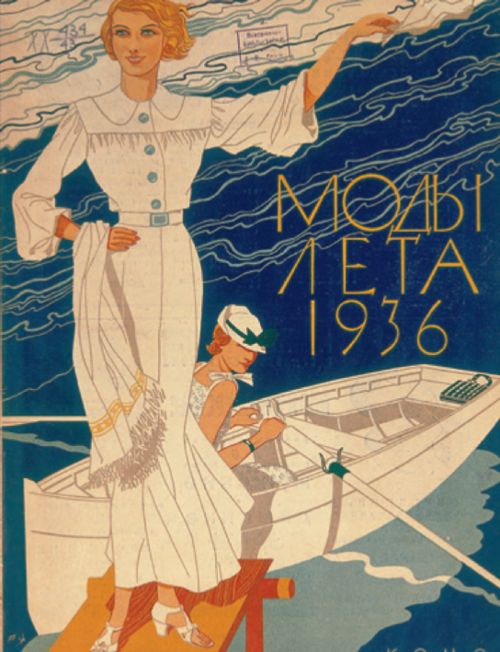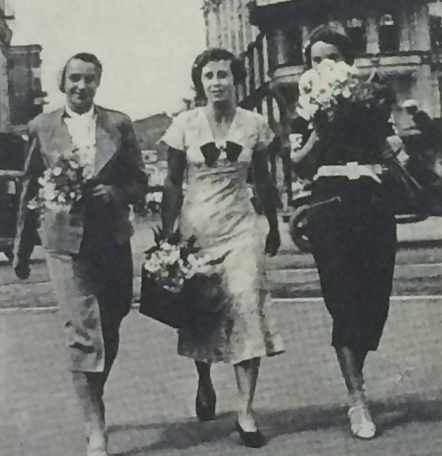The hidden meanings of Destined to be Happy exhibition - The Interview with Irina Korina
10 January 2017 | By
09 January 2017 | By
Inside the Picture: Installation Art in Three Acts - by Jane A. Sharp
19 November 2016 | By
Conversations with Andrei Monastyrski - by Sabine Hänsgen
17 November 2016 | By
Thinking Pictures | Introduction - by Jane A. Sharp
15 November 2016 | By
31 October 2016 | By
Tatlin and his objects - by James McLean
02 August 2016 | By
Housing, interior design and the Soviet woman during the Khrushchev era - by Jemimah Hudson
02 August 2016 | By
Dressing the Soviet Woman Part 3: "Are Russians Women?" Vogue on Soviet Vanity - by Waleria Dorogova
18 May 2016 | By
Dressing the Soviet Woman Part 1 - by Waleria Dorogova
13 May 2016 | By
Eisenstein's Circle: Interview With Artist Alisa Oleva
31 March 2016 | By
Mescherin and his Elektronik Orchestra - by James McLean
13 January 2016 | By
SSEES Centenary Film Festival Opening Night - A review by Georgina Saunders
27 October 2015 | By
Nijinsky's Jeux by Olivia Bašić
28 July 2015 | By
Learning the theremin by Ortino
06 July 2015 | By
Impressions of Post- Soviet Warsaw by Harriet Halsey
05 May 2015 | By
Facing the Monument: Facing the Future
11 March 2015 | By Bazarov
'Bolt' and the problem of Soviet ballet, 1931
16 February 2015 | By Ivan Sollertinsky
Some Thoughts on the Ballets Russes Abroad
16 December 2014 | By Isabel Stockholm
Last Orders for the Grand Duchy
11 December 2014 | By Bazarov
Rozanova and Malevich – Racing Towards Abstraction?
15 October 2014 | By Mollie Arbuthnot
Cold War Curios: Chasing Down Classics of Soviet Design
25 September 2014 | By
Walter Spies, Moscow 1895 – Indonesia 1942
13 August 2014 | By Bazarov
'Lenin is a Mushroom' and Other Spoofs from the Late Soviet Era
07 August 2014 | By Eugenia Ellanskaya
From Canvas to Fabric: Liubov Popova and Sonia Delaunay
29 July 2014 | By Alex Chiriac
My Communist Childhood: Growing up in Soviet Romania
21 July 2014 | By Alex Chiriac
Monumental Misconceptions: The Artist as Liberator of Forgotten Art
12 May 2014 | By Rachel Hajek
28 April 2014 | By Rachel Hajek
An Orgy Becomes a Brawl: Chagall's Illustrations for Gogol's Dead Souls
14 April 2014 | By Josephine Roulet
KINO/FILM | Stone Lithography Demonstration at the London Print Studio
08 April 2014 | By Alex Chiriac
24 March 2014 | By Renée-Claude Landry
Book review | A Mysterious Accord: 65 Maximiliana, or the Illegal Practice of Astronomy
19 March 2014 | By Rosie Rockel
Leading Ladies: Laura Knight and the Ballets Russes
10 March 2014 | By Bazarov
Exhibition Review | Cash flow: The Russian Pavilion at the 2013 Venice Biennale
03 March 2014 | By Rosie Rockel
24 February 2014 | By Ellie Pavey
Guest Blog | Pulsating Crystals
17 February 2014 | By Robert Chandler Chandler
Theatre Review | Portrait as Presence in Fortune’s Fool (1848) by Ivan Turgenev
10 February 2014 | By Bazarov
03 February 2014 | By Paul Rennie
Amazons in Australia – Unravelling Space and Place Down-Under
27 January 2014 | By Bazarov
Exhibition Review | Siberia and the East, fire and ice. A synthesis of the indigenous and the exotic
11 December 2013 | By Nina Lobanov-Rostovsky
Shostakovich: A Russian Composer?
05 December 2013 | By Bazarov
Marianne von Werefkin: Western Art – Russian Soul
05 November 2013 | By Bazarov
Chagall Self-portraits at the Musée Chagall, Nice/St Paul-de-Vence
28 September 2013 | By Bazarov
31 July 2013 | By Richard Barling
Exhibition review | Lissitsky — Kabakov: Utopia and Reality
25 April 2013 | By Richard Barling
Exhibition review | Ilya and Emilia Kabakov: The Happiest Man
18 April 2013 | By Richard Barling
18 May 2016 | By

The mystery of what used to be worn in the young USSR frequented the minds of fashion journalism throughout the Soviet era. How do Soviet women dress, where do they shop? Condé Nast journalists in the interwar period were particularly keen to answer those burning questions of the Western fashion community, curious to find out whether Communism had succeeded in its objective to destroy "the wretched psychosis of fashion" – an odious reminder of court culture in the beaten tsarist régime.
In the middle of the 1930s the Soviet woman seized to be the unfashionable khaki-garbed creature, as she became known to the world in the aftermath of the Revolution. In a discussion on the rebirth of elegance in Soviet Russia, titled sarcastically "Are Russians Women?", American Vogue reviewed recent developments in their April issue of 1934. The article observed the changing attitude towards elegance and fashionable dress in Russia, where it had become apparent in recent years that "a woman's desire to dress up is stronger than all the engines of propaganda controlled by the largest nation in the world". A strong desire though, was certainly not enough to be well-dressed in the USSR. In a garment market characterized by government control, textile shortage and restrictions written by official fashion bureaus, the main problem was that there was simply nothing to buy. This substantial issue, addressed in the Vogue article "Russia opens the door", was found to have changed in 1936, when British Vogue sent a reporter to Leningrad, who was confronted with a new wondrous phenomenon: the Univermag. "Univermag, doushenka, that means universal magazine or store (...) the newest shops where you can see all the fashions and buy any clothes you want". What sounds like the basic concept of a regular department store was in fact the very first opportunity given to Soviet women to shop freely without a worker's card or communist party ticket, while the clothes offered did not satisfy Western customers and surely did not resemble the ravishing Paris-inspired dresses illustrated in the newly emerging Soviet fashion magazines.
"Fashions, how can you speak about fashions here?" cried an American woman indignantly, seeing Russia for the first time. "Why, I never saw such shabby, poorly dressed creatures in all my life. I haven't seen a single dress that I would care to buy or borrow or put on for ten minutes, not even for a 'hard times' party. Fashions indeed! What eyes have you got?"
"Russian eyes," answered the Vogue reporter firmly, "real Russian eyes that have seen the peasants and working women's dresses before the Revolution and after, and two years ago and again this year. And now definitely - oh, yes, very definitely, there are fashions in U.S.S.R. Poor, shabby, in your eyes, perhaps, but grand to the Russian youth, something lovely and much to be desired."
From a Russian perspective, the government's goal to transform the women of Moscow into counter-bourgeois, unalluring and fashion-unconscious comrades, had not succeeded.



